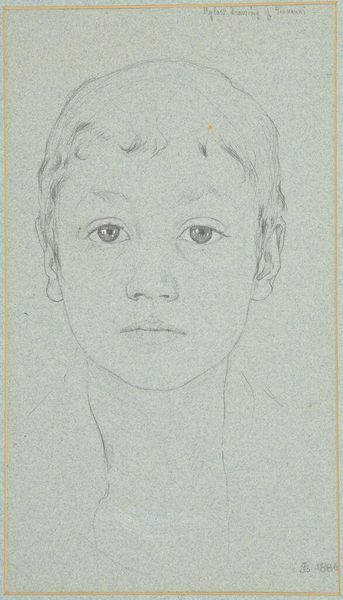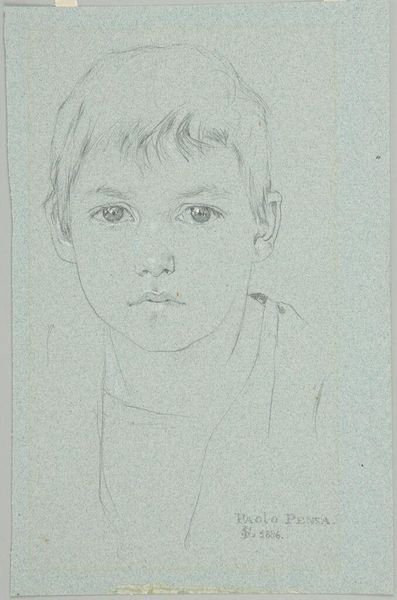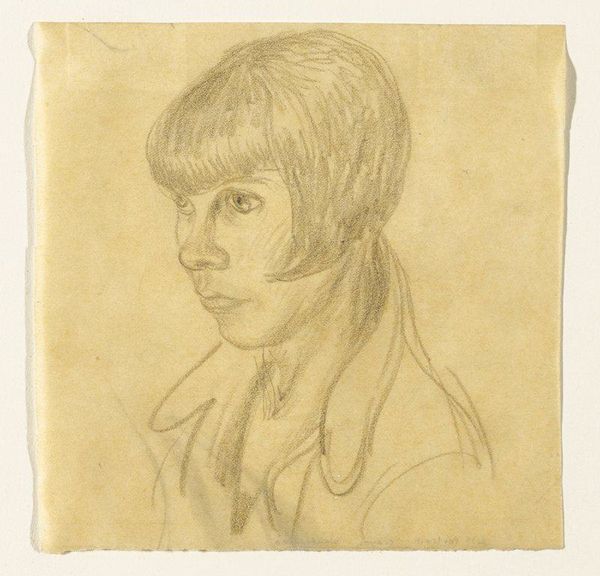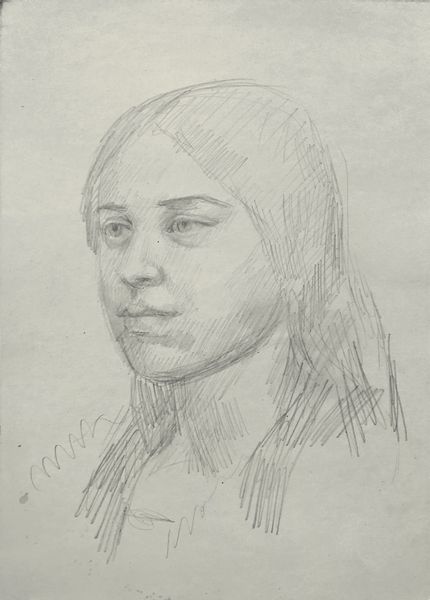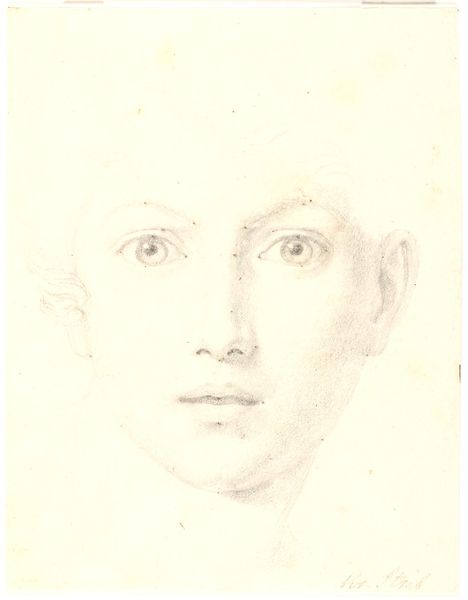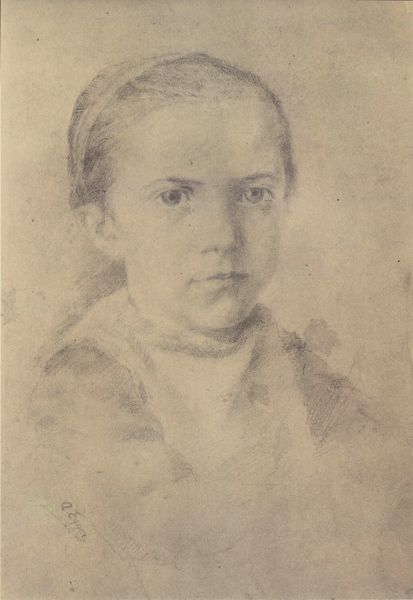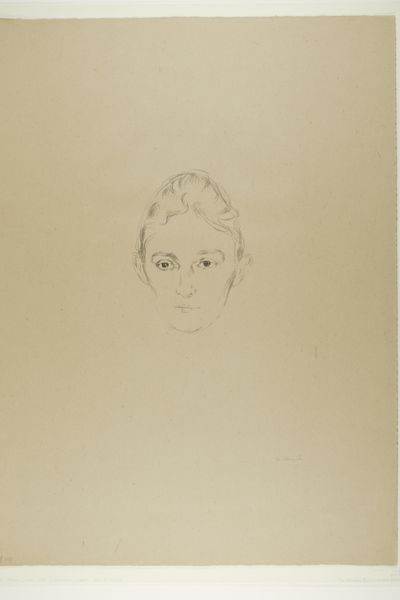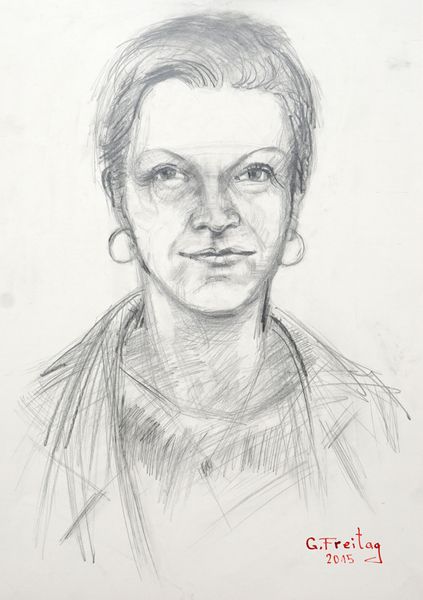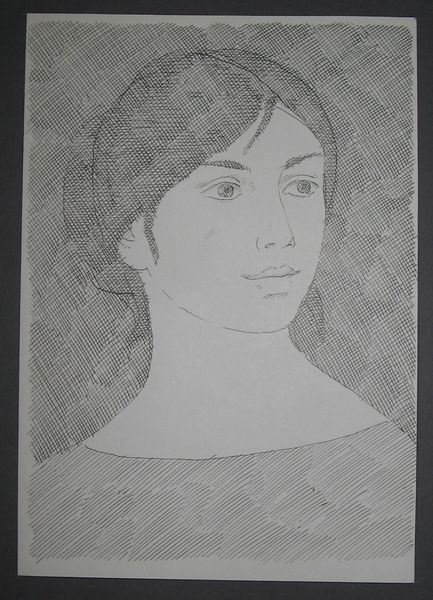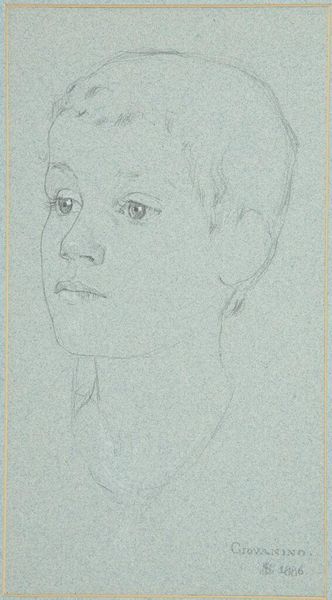
drawing, pencil
#
portrait
#
pencil drawn
#
drawing
#
amateur sketch
#
light pencil work
#
head
#
face
#
pencil sketch
#
charcoal drawing
#
figuration
#
portrait reference
#
pencil drawing
#
sketch
#
pencil
#
expressionism
#
limited contrast and shading
#
nose
#
portrait drawing
#
pencil work
#
forehead
Copyright: Public domain
Curator: At first glance, there’s a disarming innocence. A child stares directly out at us, but her gaze feels… burdened. Editor: That’s interesting. Well, we’re standing before "The Artist's Daughter Ila," a pencil drawing by Albin Egger-Lienz from 1919. It’s a simple medium, pencil on paper, yet it captures something complex. Curator: It’s that simplicity that draws me in. Pencil itself has always been linked to study, practice, a raw capturing of form. Here, the artist explores, with humble material, the nature of their relationship to their subject. Her button nose and wide eyes are drawn in such a way, they remind me of Renaissance images of the Christ Child, holding infinite knowing, even in her youth. Editor: That’s a beautiful connection. To me, it speaks of a tension. Egger-Lienz was working in a time of immense social upheaval, and the echoes of World War I resonate, even in this seemingly intimate portrait. The child’s expression seems to hold that weight. Look at the subtly furrowed brow, the slight downturn of the mouth. Is this just observation or is he projecting? Curator: There is an unspeakable quality to this, captured in light and shadow. But I'm intrigued by your idea that an artist may not be simply exploring objective representation in rendering such an intimate work. To explore this in a time of great anxiety in Europe would not be unusual. Art's therapeutic properties speak in volumes during social strife and great tragedies in human events. Editor: I think you are on to something with the cathartic intent. And her youth further complicates the picture. Children are never truly apolitical; they embody the hopes and anxieties of a generation. Seeing Ila here, through her father's eyes, we catch a glimpse of both vulnerability and resilience in a broken time. Curator: Agreed. Seeing "Ila" brings together many ideas around selfhood in fraught times. Art offers to reveal that which is not easily seen. Editor: Yes, the act of seeing becomes a kind of resistance, pushing back against the darkness. I will be pondering Ila's quiet gaze and quiet resistance.
Comments
No comments
Be the first to comment and join the conversation on the ultimate creative platform.
